Spread over 200 km2 area of contiguous forest, undulating terrain, hill streams and river networks, Nameri National Park is famous for its white winged wood duck. This remarkable sanctuary of biodiversity was officially declared a national park on 13th August 1998. It is formed by carving out 137.07 square kilometers from the Nameri Wildlife Sanctuary and incorporating 62.93 square kilometers from the Naduar Reserve Forest. Later, it was declared as Nameri Tiger Reserve by the Govt. of Assam vide Notification No. FRW-55/99/70 Dated 1st March, 2000.
The park is also inhabitant by various other species such as Bengal tiger, Indian elephant, Indian bison, Himalayan Sloth Bear, Wild dog, over 600 floral species and more than 374 species of birds. The Pakke Tiger Reserve in Arunachal Pradesh shares interstate transboundary with Nameri National Park on its northern side facilitates the transitional wildlife species.
Nameri National Park Location
The Nameri National Park is located in northern part of Sonitpur district of Assam covering 200 square kilometers sharing interstate boundary alongwith Arunachal Pradesh. The total area of Pakke Tiger Reserve located in Arunachal Pradesh alongwith Nameri National Park shares transboundary together spanned over 1,000 square kilometers with altitude start from 79 meters to over 1,500 meters above sea level. The park’s geographical area coordinates at 26°50´48´to 27°03´43´´North and Longitude 92.39´00´´ to 92°59´00´´ East.
The distance of the Nameri National Park from Tezpur 35 kilometers and from Guwahati about 210 kilometers.
Location, Area, Name and Administration
District: Sonitpur
Sub-Division :Tezpur
Forest Division: Western Assam Wildlife Division, Tezpur
Name of the National Park: Nameri National Park
Park Area:
• Core Area – 200 sq. km
• Satellite Core – 120 km
• Eastern Buffer – 80 sq. km
• Western Buffer – 64 sq. km
• Total – 464 sq. km
Administration:
The management of the core area of the Nameri National Park and Tiger Reserve is under the Western Assam Wildlife Division. The Field Director of Nameri Tiger Reserve is designated as the Divisional Forest Officer of the Western Assam Wildlife Division.
The Eastern Buffer of the reserve falls under the jurisdiction of the DFO, Sonitpur East Division (T) with Diplonga Range overseeing its management. The Western Buffer is administered by the DFO, Sonitpur West Division (T) with the Charduar Range responsible for its administration.
Nameri National Park location google map
Nameri National Park Map, Boundary
The northern boundary of Nameri National Park is demarcated by its geographic coordinate system (GCS) which shares interstate boundary alongwith Pakke Tiger Reserve situated in Kameng division of Arunachal Pradesh in North. The eastern boundary is marked by the Bor-Dikorai River and the Sijussa forest camp. On its western side, the park’s border is the Jia-Bhorolli River and it shares this border with the Balipara Reserve Forest. In the south, the park’s boundary is formed by the confluence of the Jia-Bhorolli and Bor-Dikorai rivers. Within the park, numerous smaller streams and rivers including Diji, Dinai, Doigurung, Nameri, Dikorai, Khari and others, crisscross the landscape, ultimately flowing into the Jia-Bhorolli River and contributing to the park’s rich biodiversity.
The boundary of the described area is as follows:
1. North: Starting at the Assam-Arunachal Pradesh state boundary at Pillar No. 7/1 in Bhalukpung, it goes eastward along the state boundary, passing several more pillars until it reaches Boundary Pillar No. 9/6, where it meets the right bank of the Bordikurai River.
2. East: From the aforementioned point on the inter-state boundary it follows the right bank of the Bordikorai River along its old course heading south until it reaches the confluence of the old Bordikorai and Koilajuli rivers. It then crosses the right bank of the Bordikorai River to a point at the northeast corner of Sikam basti and from there the boundary turns due west.
3. South: The boundary runs due west along the southern periphery of the highland starting from the point where the low configuration of Sikam basti begins until it reaches a point on the left bank of the Jia-Bhorolli River.
4. West: From the previous point, the boundary continues along the left bank of the Jia-Bhorolli River until it reaches a point opposite the Dharikati Village. It then crosses the Jia-Bhorolli River to the right bank and proceeds upstream along the right bank until it reaches the Assam-Arunachal Pradesh inter-state boundary Pillar No. 7/1 marking the end of the described area.

Nameri National Park History | Establishment
- Nameri National Park is within the oldest Naduar reserve forest of Assam, established on October 17, 1978.
- On 6th September 1985 Nameri Forest Reserve was declared as Nameri Wildlife Sanctuary vide order No. FRW. 34/84, dated the 6th September 1985 covering 137.07 square kilometers.
- 1995- Sighting of White Winged Wood Duck species at Nameri Wildlife Sanctuary started gaining importance.
- On 13th August 1998, Nameri Wildlife Sanctuary was declared as Nameri National Park vide notification No. FRW. 11/96/81, dated the 13th August 1998. The Nameri National Park boundary includes the existing Nameri Wildlife Sanctuary (Area-137.07 sq. km, original part of Naduar Reserved Forest) and part of the remaining Naduar Reserved Forests (Area-62.93 sq. km part of the intended area of the First addition to Nameri Wildlife Sanctuary).
- 1998 – Declaration of Nameri Wildlife Sanctuary as a National Park paved the way for many surveys leading to the sighting of Elephants and Tigers.
- On 1st March 2000, Nameri National Park was also declared as Nameri Tiger Reserve vide notification No. FRW. –55/99/70 dated the 1st March 2000 and become the second Tiger reserve of Assam after Manas Tiger Reserve.
The declared boundary of Nameri National Park and Tiger Reserve included existing Nameri National Park notified vide No. FRW. 11/96/81, dated 13-08-1998.
Buffer Zone included:
(a) The whole area of Naduar Reserved Forest notification vide No.5 of 17-10-1878 located east of the existing Nameri National Park up to the Ghiladhari River total area of 80 square kilometers.
(b) The whole area of Balipara Reserved Forest notification vide No.5 of 27-10-1878 located west of the existing Nameri National Park of the existing Nameri National Park up to the Rangapara- Bhalukpung railway line total area of 64 square kilometers.

Nameri National Park Geography
The geography of Nameri National Park is predominantly 90% covered by vast forests and woodlands spanning about 180 sq. km while the remaining 10% consists of the Jia Bhoreli River its tributaries and grasslands. Its surrounding area is mostly flat with occasional hillocks and spurs. There are significant deposits of alluvium and sandstones in the park’s northern parts while the eastern and western areas contain deposits of boulders, pebbles, shale, slate quartz and other minerals along with alluvial deposits.
1. Terrain
The undulating terrain of Nameri National Park consists of hilly slopes and lowlands resulting in the formation of numerous swamps and streams. These water sources support various semi-aquatic plant species reflecting the presence of wet alluvial soil.
The park has thick forests with lots of different climbing plants, small plants and bushes that make it look very green and full. In some areas, the upper canopy is so dense that sunlight struggles to penetrate. The park’s numerous hill streams wind their way through thick bamboo and cane growths occasionally merging in swampy regions. The ground in the forest is covered with a thick layer of fallen leaves and organic humus which helps new plants grow.
2. River
Nameri National Park is bordered by two rivers, the Jia Bhoroli in the west and the Bor Dikorai in the east. The Jia Bhoroli River called as the Kameng River in Arunachal Pradesh flows from the Himalayas and then changes direction at Bhalukpung (92°65’E: 27°01’N) in Assam where it calls Jia Bharali River.
The Jia Bharali River starts in the high Himalayan mountains at about 5400 meters above sea level and also in the lower Panch mile range at around 69 meters above sea level. The Jia Bharali basin has a shape that looks like a wide leaf with its base cut off. It’s about 157 km long and 143 km wide. The area where water flows into the Jia Bharali River is called its catchment area. In total, this area is about 10,289 sq. km. Out of this 4,055 sq. km are in the east Kameng district, 5,305 sq. km are in the west Kameng district of Arunachal Pradesh and the remaining 929 sq. km are in the Sonitpur district of Assam.
Many rivers, small rivers and perennial streams originating in Arunachal Pradesh such as Bor Dikorai, Diji, Dinai, Khari, Nameri and Upper Dikiri flow through Nameri National Park ensuring a crucial water source for the park’s flora, fauna and avifauna. They all joined into the Jia-Bhoroli River which ultimately merges with the Brahmaputra River near Bhomoraguri Hill in Assam’s Sonitpur district.
The Bor Dikorai River originating in Arunachal Pradesh flows from north to west southward, creating the eastern border of Nameri National Park. It meets the Jia-Bhoroli rivers in the park’s southern part, marking the park’s southern boundary which includes an area of 9.64 square kilometers of cultivated land.
Nameri National Park Climate
The climate of Nameri National Park is a sub-tropical monsoon with mild, partly dry winters and warm, humid summers. The region has distinct seasons: winter, summer or pre-monsoon, monsoon and retreating monsoon. The area receives abundant rainfall during the wet summer season which is influenced by the southwest monsoon. The Jia-Bhoroli basin shows an increasing trend in annual rainfall from south to north with a relatively uniform pattern along the east-west stretches. During winter the average temperature at Nameri National Park remains above 10 degrees Celsius.
The pre-monsoon season which occurs from March to May in the region experiences rainfall (average 3,500 mm) and thunderstorms accompanied by an average temperature of around 26 degrees Celsius.
The monsoon season begins In early June bringing heavy rainfall and increasing temperatures with an average temperature of around 30 degrees Celsius.
The winter season starts from November to February is cold due to snowfall in the higher ridges of Arunachal Pradesh situated north of the Nameri National Park.
Flora Diversity of Nameri National Park
Nameri National Park is rich natural vegetation with numerous botanical plant species. The park mostly has a type of moist mixed deciduous forest with the tropical evergreen and semi-evergreen forests. With its diverse habitats and favourable climate, the park boasts an impressive collection of over 600 floral species. Notable floral species are Gmelina arborea, Michelia champaca, Amoora wallichi, Chukrasia tabularis, Ajar, Urium, poma, Bhelu, Agaru, Rudraksha, Bonjolokia, Hatipolia akhakan, Hollock and Nahor. The other types of forests are like areas with tall grasses, bamboo thickets and small open grassy spots.
Orchid Varieties of Nameri National Park
Among the myriad floral species found in Nameri National Park orchids hold a special place. Some Orchids found in the park are Dendrobium, Cymbidium, Ladies Slipper, etc. Tree ferns, creepers and lianas are some other specialities orchids of this park. The park’s mixed deciduous forest, the tropical evergreen and semi-evergreen forests extends a good environment for the growth of these delicate orchid species.
Wildlife Diversity of Nameri National Park
A total number of 54 mammalian fauna species have been recorded in Nameri National Park. Some common animals live in the park are the Pygmy Hog, Royal Bengal Tiger, Indian Bison, Asiatic Elephant, Clouded Leopard, Wild Dog, Black Bear, Sambar and hog deer.
Nameri has a significant population of Asian elephants primarily concentrated in areas such as Khari-Bagijuli and Potasali-Balipung. The available food resources and water in the park engrossed the Asian Elephant throughout the year. Nameri’s rivers and streams are also home to a thriving population of Common Otters. These playful creatures are frequently seen along the banks of the Jia Bhoroli, Bor Dikorai and other water bodies within the park.
Avian Diversity of Nameri National Park
The wetlands in Nameri National Park and Tiger Reserve, like Magurmari Beel, Borghuli Beel, and Kurua Beel are created when the dry parts of the Jia-Bhorolli River fill with water. These wetlands become homes for water birds during the dry season. The park has various trees including Ficus, Bischofia, Prema, Amoora, Terminalia, Castanopsis and more which produce seeds that serve as food for these birds. The park has been recorded 363 bird species. Some notable bird species found in Nameri National Park include White Winged Wood Duck, Rufous Necked Hornbill, Ruddy Kingfisher, Ibisbill, Long-Billed Plover,Black-Bellied Tern, Yellow-Bellied Flowerpecker, Fish Eagle, White Tailed Eagle, Lesser Fish Eagle, Owls And Greater Spotted Eagle.
Things to do at Nameri National Park
1. Jungle Trekking at Nameri National Park
To begin your jungle trek at Nameri National Park you must first visit the Range Forest Office at Potasil. There are two shift of trekking one in the morning shift and another in the afternoon. The morning trek is generally popular as it offers the best chances of spotting various bird species and animals. At the Forest Office you have to registered the names of the trekkers and pay the required entrance fees. Each group of visitors is then assigned an armed forest guard who will guide and ensure your safety throughout the trek.
The trek starts by crossing the Jia Bhoroli river on a boat. After crossing the river a short walk will reached you to another forest office which marks the beginning of the trek into the forest reserves of Nameri National Park. The trekking follows a well-defined path that stretches approximately 5 kilometers taking you deep into the forest of the park.
While trekking through the forest you might spot various animals like the Royal Bengal Tiger, wild elephants and variety of bird species.
One of the many enchanting bird species found within the lush foliage of Nameri National Park is Asian Fairy Bluebird. Spotting a pair of Asian Fairy Bluebirds amidst the verdant surroundings is a moment of pure delight for bird enthusiasts and photographers.
A jungle trek usually takes about 2 hours allowing you to explore different areas of Nameri National Park and enjoy its natural beauty. During the trek, you’ll hear the lovely songs of birds and might spot them using binoculars.
The months of November through April are considered the ideal time to embark on a jungle trek at Nameri National Park. During this period the weather is pleasant and the chances of wildlife sightings are higher.
2. River Rafting at Nameri National Park
River rafting allows visitors to navigate the exhilarating rapids of the Jia Bhoroli River, a major tributary of the Brahmaputra river. To participate in this thrilling experience visitors must pre-book their river rafting session before arriving at the park. The rafting adventure begins approximately 13 kilometers upstream of the Jia Bhoroli river where participants are taken to the designated starting point.
The entire river rafting expedition spans a distance of 13 kilometers downstream offering an adrenaline-pumping ride amidst the natural beauty of Nameri National Park. During the rafting adventure keep your eyes open for sightings of wildlife alongwith the riverbanks. If luck favour, you might see a majestic tiger or a herd of wild elephants coming to quench their thirst.
As you raft down the Jia Bhoroli River take advantage of this unique opportunity to spot a variety of bird species. These birds usually gather near water away from the busy jungle to find food.
The duration of the river rafting activity at Nameri National Park is approximately 3 hours allowing ample time to immerse yourself in the beauty of the surroundings and capture memorable moments. The rafting journey concludes at Potasil camp near the Forest Range Office of Nameri National Park.
3. Discover Birdlife of Nameri National Park
Initially established to safeguard the endangered White Winged Duck, Nameri National Park has gained international acclaim as India’s premier birding destination. Among its diverse avian population, wood ducks thrive in abundance. The park is home to three vital wetlands: Borghuli Beel near Baitakata Camp, Kurua Beel near Potasil Camp and Magurmari Beel near Oubari Camp which extends a livelihood of White Winged Wood Duck.
To watch Birds, surprisingly you don’t even need to venture deep into the forest to witness a rich avian spectacle. The vicinity of the Forest Office and the Eco Camp at Nameri National Park is frequented by various bird species. Near the Nameri Eco Camp you can spot green parakeets, kingfishers and hornbills. A tall tree within the camp premises has become a sanctuary for diverse bird species with woodpecker-constructed holes serving as cozy homes, particularly for the ever-peeking green parakeets. The Hornbill nest is up high on the tree’s branches.
To truly experience Nameri’s birds go into the forest reserves and walk by the riverbanks where many bird types come to eat. Some birds live in Nameri National Park are White-cheeked Partridge, Great Hornbills, Wreathed Hornbills, Rufous-necked Hornbills, Oriental Dwarf Kingfishers, Oriental Hobby Kingfishers, Pallas’s Eagles, Grey-headed Eagles, Lesser Fish Eagle, Yellow-bellied Flowerpeckers, etc.
How to Reach Nameri National Park | Distance
1. By Air:
• Nearest Airport: Tezpur Airport, Salonibari, Tezpur, Assam 45 km.
• Guwahati: Lokpriya Gopinath Bordoloi International Airport, Guwahati 210 km.
2. By Rail: Nearest Railway Station: Dekargaon Railway station, Tezpur 45 km.
3. By Road: ASTC Bus Station, Tezpur 60 KM.
Where to stay at Nameri National Park
There are several accommodation options at Nameri National Park:
1. Eco Camp Nameri: This camp is at the park’s entrance and it’s a popular choice. You can stay in tents or cottages, some of which are built in a traditional Assamese style using bamboo and wood. It is surrounded by trees providing a refreshing atmosphere. Plus, they have a restaurant serving local, Indian and Chinese cuisine.
2. Camp Lalimou Nameri: Camp Lalimou is a jungle retreat close to Nameri National Park. They have fancy cottages and special Chang Ghars, which are cottages on platforms to keep bugs away. They also have tents in the jungle with bathrooms. You can eat freshly made food at their restaurant and see the park’s cool stuff.
3. Nameri Jungle Camp: Nameri Jungle Camp is near the second entrance of Nameri National Park and it’s all about nature. They have tree cottages and more cottages, giving you a rustic jungle feel. Each treehouse and cottage has comfy beds, bathrooms and porches with chairs to watch birds. Delicious ethnic Assamese foods serve in the camp.
4. N Palky Camp Nameri: N Palky Camp is a new place to stay at Nameri National Park. They have different kinds of places to sleep, like regular cottages, tents in the jungle, tents like those in the mountains, and even houses up in the trees. Some of these places have bathrooms.
Nameri National Park Photos: Resorts
How much is safari cost?
|
Sl. No. |
Item |
Rate in INR (₹) | |
| Indian | Foreigner | ||
| General Charges | |||
| 1.a. | View fee person/entry for entering the park | 50 | 500 |
| 1.b. | Fee for visiting full day till sunset | 200 | 2000 |
| 2. | Fee for elephant seat/trip for adult | 460 | 1080 |
| 3. | Toll for road/trip per day | 300 | 300 |
| Non-Professional Photography | |||
| 4.i. | Still Camera | 50 | 50 |
| 4.ii. | Movie Camera | 500 | 1000 |
| 4.iii. | Video Camera | 500 | 1000 |
| Professional Photography | |||
| 5.i. | Still Camera | 500 | 2000 |
| 5.ii. | Movie Camera | 5000 | 20000 |
| 5.iii. | Video Camera | 5000 | 20000 |
| Film/Documentary Shooting per day | |||
| 6.i. | Feature Film Shooting | 5000 | 25000 |
| 6.ii. | Security Money for Feature Film | 5000 | 25000 |
| 6.iii. | Documentary Film Shooting | 5000 | 25000 |
Conclusion
Nameri National Park, in Assam, India, is a diverse and breathtaking natural wonder. Covering 200 square kilometers, it’s known for its white-winged wood duck and rich biodiversity. The park is also inhabitant by various other species including Bengal tiger, Indian elephant a, Indian bison, over 600 floral species and more than 374 species of birds. The Pakke Tiger Reserve alongwith Nameri National Park shares transboundary facilitates the movement of wildlife. With activities like jungle trekking, river rafting and comfortable accommodations available like Eco Camp Nameri, Camp Lalimou and more, it’s the perfect place for visitors to visit Nameri National Park and Tiger Reserve.
FAQ
Q.) Where is the location of the Nameri National Park?
A. The Nameri National Park is located in northern part of Sonitpur district of Assam covering 200 square kilometers sharing interstate boundary alongwith Arunachal Pradesh.
Q.) What is Nameri National Park famous for?
A. Spread over 200 km2 area of contiguous forest, undulating terrain, hill streams and river networks, Nameri National Park is famous for its white winged wood duck, Elephants herd, Pygmy Hog.
Q.) What is the name of the National Park of Nameri?
A. On 1st March 2000, Nameri National Park was also declared as Nameri Tiger Reserve vide notification No. FRW. -55/99/70 dated the 1st March 2000 and become the second Tiger reserve of Assam after Manas Tiger Reserve.
Q.) Which district is Nameri National Park in?
A. The Nameri National Park is located in northern part of Sonitpur district of Assam covering 200 square kilometers sharing interstate boundary alongwith Arunachal Pradesh.
You May Also Like
- Bura Chapori Wildlife Sanctuary
- Raimona National Park
- Bornadi Wildlife Sanctuary
- Garampani Sanctuary
- Laokhowa Wildlife Sanctuary
References
- Nameri National Park & Tiger Reserve, https://namerinptr.in/
- Nameri National Park, https://assam.gov.in/about-us/402#nam
- https://en.wikipedia.org/wiki/Nameri_National_Park
- https://www.researchgate.net/Wildlife_habitat_evaluation_and_mammalian_checklist_of_Nameri_National_Park_Assam_India.PDF
- https://www.pcbassam.org/ACTION PLAN FOR JIA BHARALI RIVER.pdf


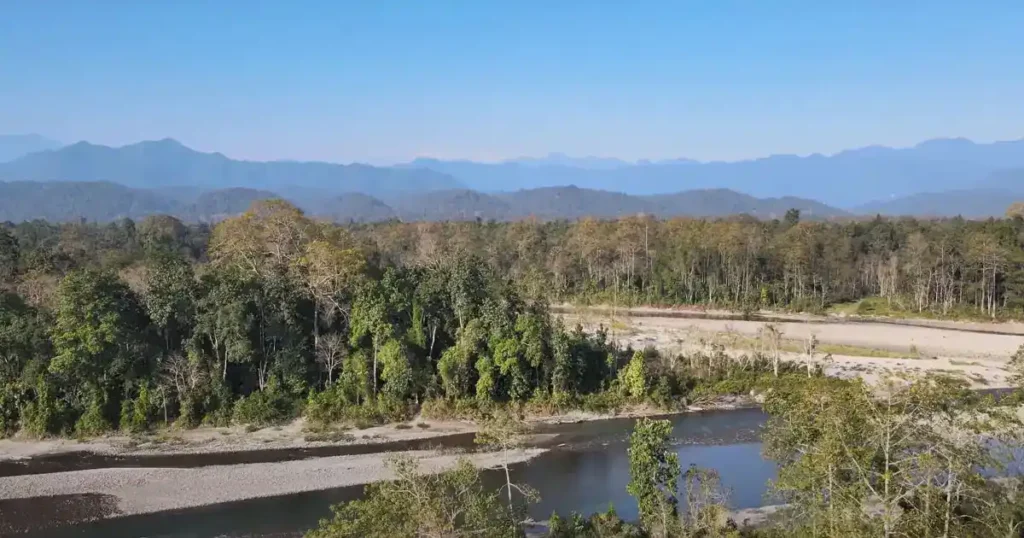

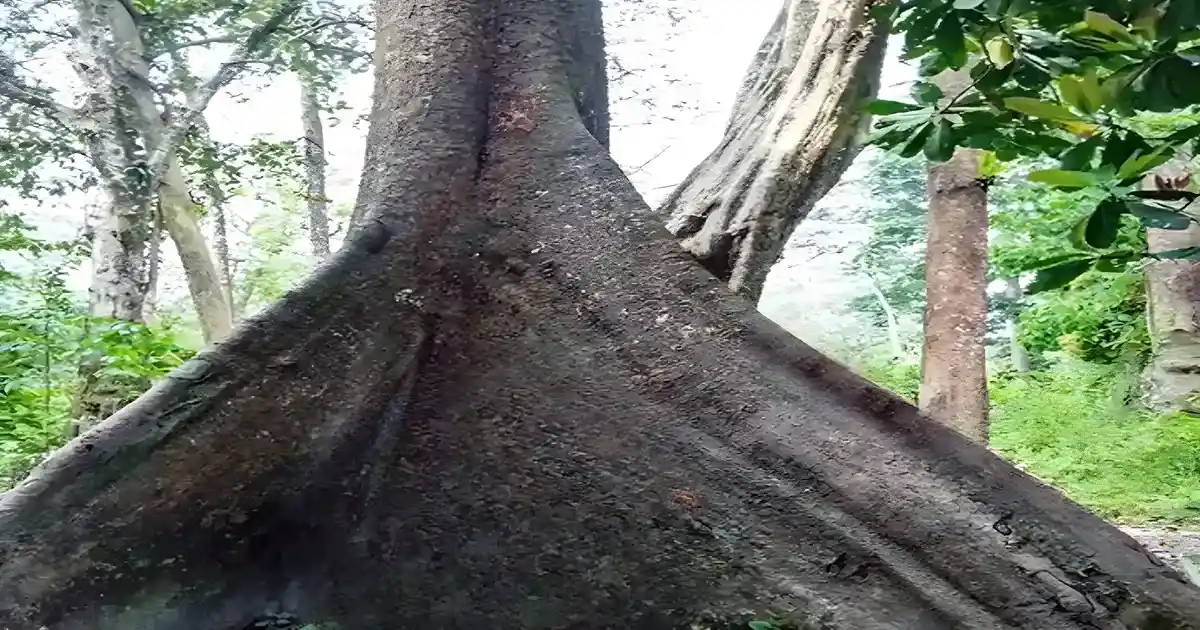







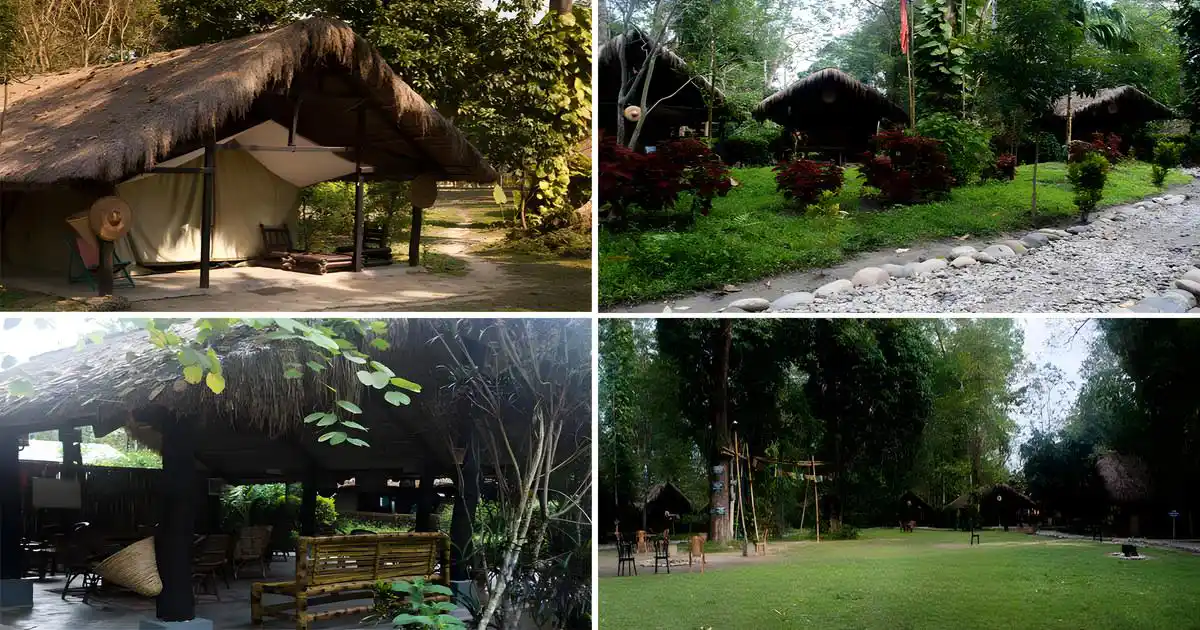

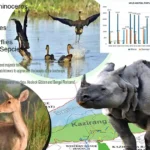

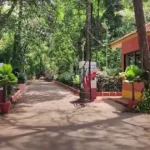
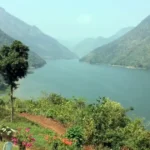


4 thoughts on “Nameri National Park”